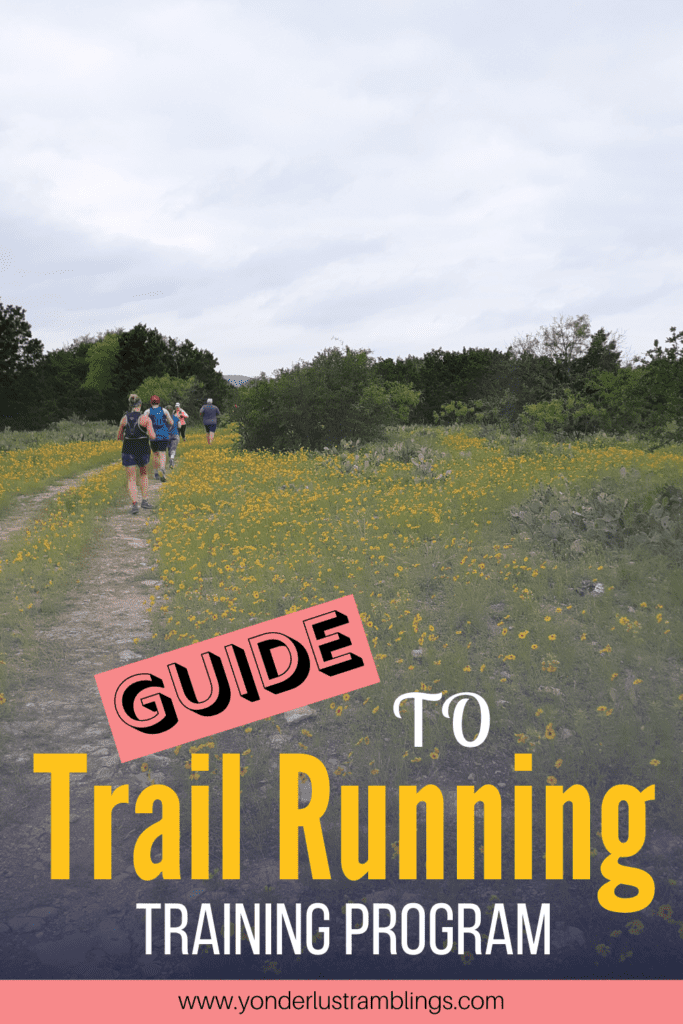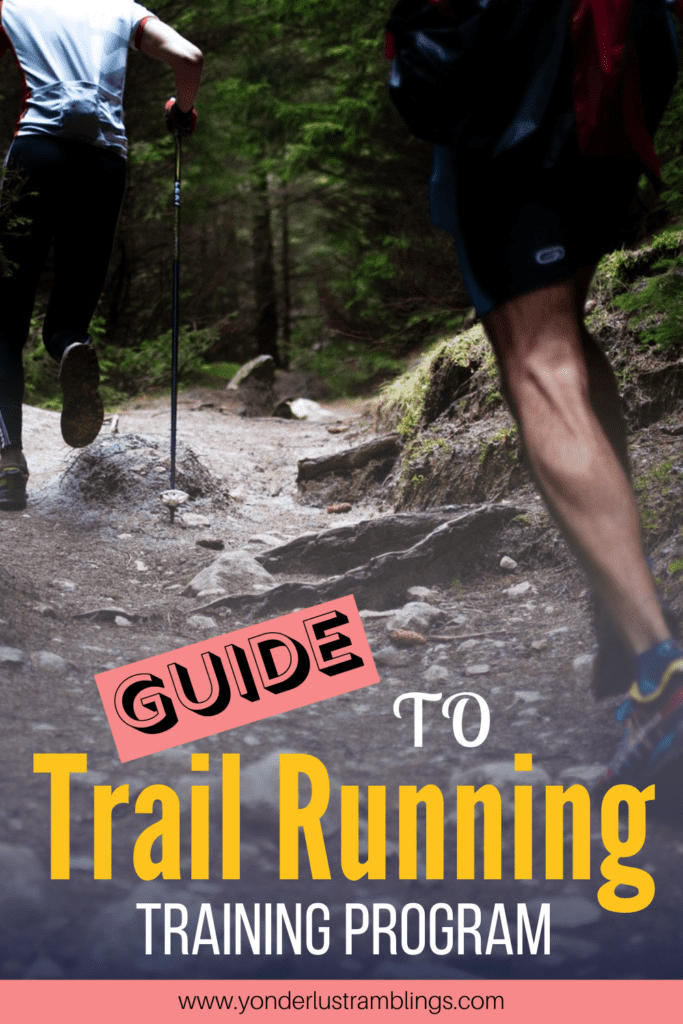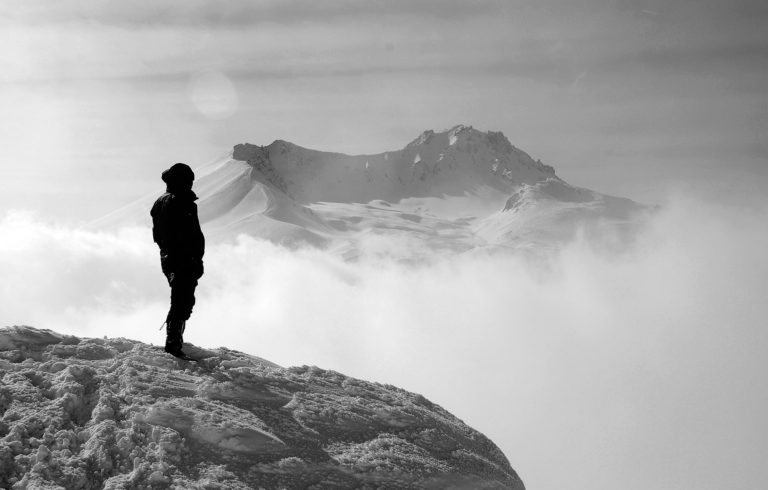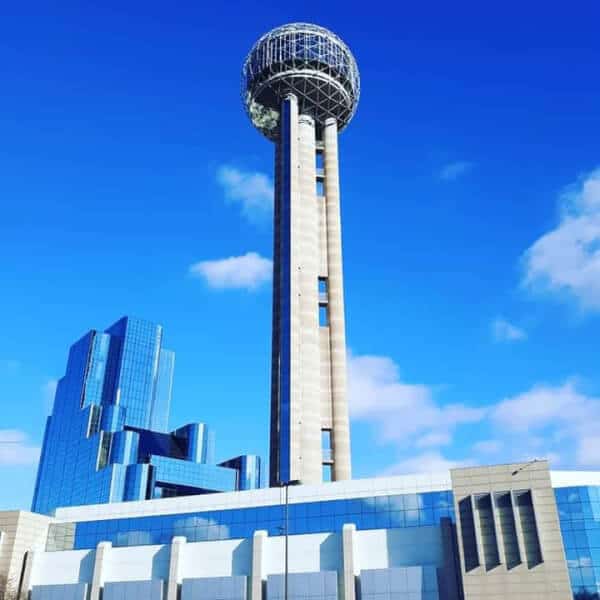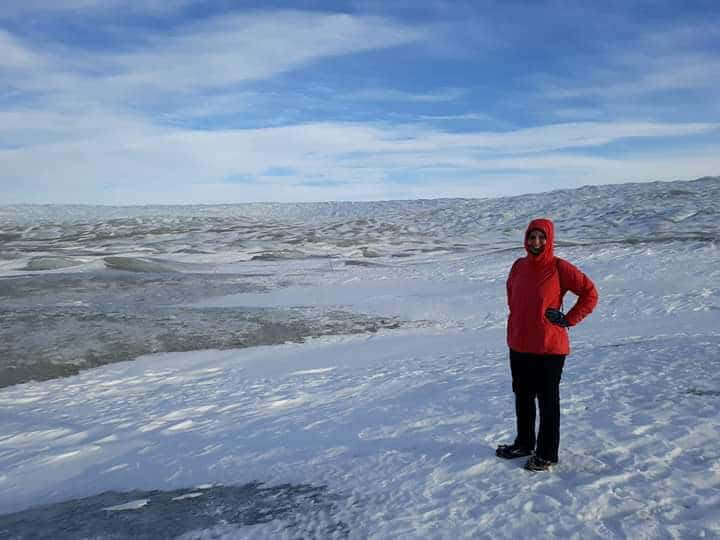12 Step Long Distance Trail Running Training Plan for Beginners
If you have discovered a new, or existing, love for trail running, and want to channel your enthusiasm into a new trail running goal, it may be time to look into training for a trail running race with these 12 step trail running plan for beginners! Trail running races are among some of the best destination races you can find in terms of scenery, challenging terrain, and rugged determination! It is an ideal way to hone your skills, revel in the reward of hard work, accomplish a new goal, and enjoy the camaraderie that comes with it! A responsible trail running training program, especially one geared for beginners, should approach racing in an intentional, gradual, and responsible way. These 12 trail running beginner program steps will walk you through all the basics of a simple and successful trail running plan for that first, or next,long distance trail running race!
Disclosure: Below are some affiliate links-these are all products I highly recommend. I won’t make any recommendations on this page that I haven’t tested or personally used! Enjoy this 12 step trail running beginner program!
Table of Contents
12 Step Trail Running Training Plan for Beginners
These 12 steps of a successful trail running training program include how to set up, and more importantly, stick to a trail running training plan, invest in the right trail running gear, and seamlessly include all the additional components of a well-oiled trail running training plan for beginners!
The 12 Steps of a Trail Running Beginner Program include:
- Create a Trail Running Plan
- Get the Right Trail Running Gear
- Schedule Your Training Runs
- Schedule Cross Training
- Schedule Rest Days
- Pick a Destination Trail Running Race
- Fuel with Proper Nutrition
- Increase Training Mileage Gradually and Intentionally
- Listen to Your Body
- Vary Your Trail Running Routes
- Solo Running vs. Group Running
- Collaborate with Others
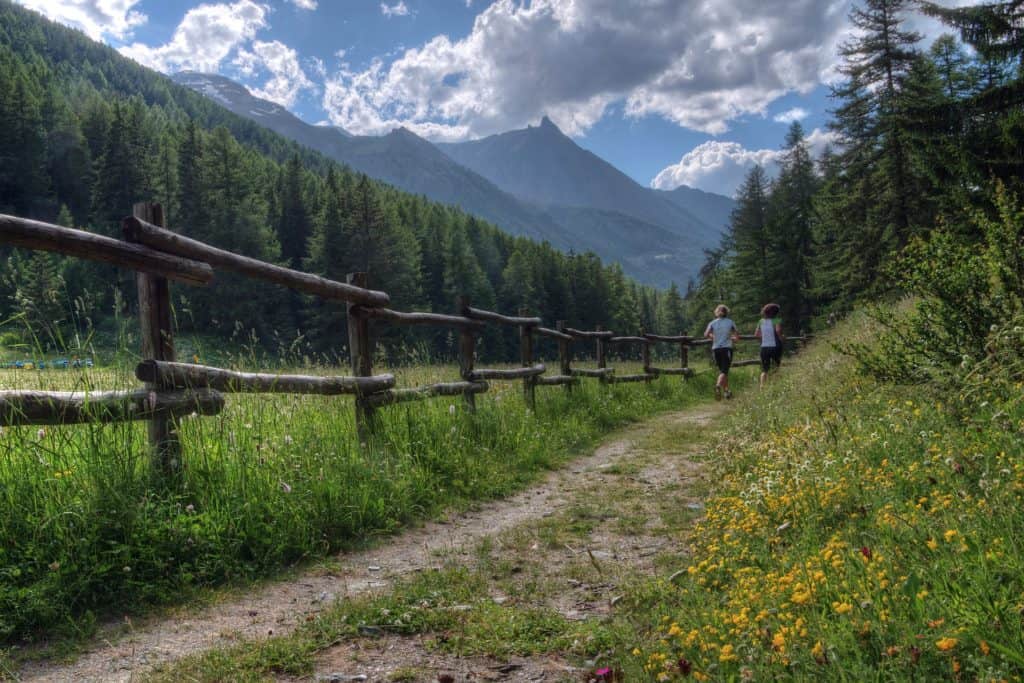
#1: Create a Trail Running Training Plan
I cannot emphasize this crucial step in the trail running training plan enough. When creating, implementing, or for that matter just sticking with, a trail running beginner program, it must be formulated and scheduled with intentionality! Do not just try to wing your trail running training plan.
The excitement and adrenaline will inevitably wear down at times, and if you do not have a scheduled out trail running training program, you are much less likely to stick with your training runs, and unintentionally allow the tiredness, burnout, and procrastination to creep in.
The one thing that has worked for me above all else, is to schedule my trail running training plan. Day by day, week by week, and month by month. That means literally grab a calendar and a pencil, and schedule in your training run days, your cross training days, your rest days, and your race day!
If you wait until you “have extra time”, or wait until “you feel like it”, your mind will try to come up with excuses. Even the most dedicated struggle with this. When training runs are already scheduled into your day, your week, and your month, things tend to find a way to work themselves around and out with your trail running training plan.
Scheduling and intentionality are key! Make it a tangible, visual thing, and that is always the first key to success with any trail running beginner program! More on how to actually implement this step on #’s 3-5 below.
#2: Get the Right Trail Running Gear
Before you start your trail running plan, invest in the right gear for your trail running beginner program. Not only will you be more comfortable and ensure increased performance, but you are more likely to offset one of the biggest hurdles to a successful trail running training plan – injury!
The right gear can definitely set you on a path to decrease encounters with injuries. As you progress along your trail running training journey, you’ll meet other trail runners who swear by this item of gear or this race day strategy, and your inventory is likely to grow. But what are the must have basics for a responsible trail running beginner program?
Trail Running Basics:
- #1: Trail Running Shoes
- #2: Performance Socks
- #3: Water Transportation System
- #4: The Right Fabrics
Now let’s dive into the importance of each of these 4 basics!
#1: SHOES! The most important item of trail running gear are shoes! Trail running shoes look different than road running shoes, due to the differences a trail runner can expect in the terrain with road running versus trail running.
Simply put, trail running is less “predictable” in its courses. Trail running is characterized by uneven terrain, natural elements such as tree roots, gravel, sand, rough rocks and even boulders. Trail running shoes are adapted to handle these challenges much more so than a standard road running shoe. The reason you need to invest in a trail running shoe specifically, is because they have adapted cushioning and reliably specific grip.
Ultimately, no one can tell you for sure which trail running shoe is best for you. You still need to go in person, try out some shoes, have a running store staff member analyze your gait, as well as get the recommendations of tried and true trail runners. That being said, I’ve run every long distance race, both road racing and trail racing, in two brands that I rely completely on: Brooks and HOKAS.
When I was mostly road running, I ran all my marathons and half marathons in Brooks Glycerin road running shoes. I have found the Brooks brand to be without flaw in my personal experience. I have at times branched into the Brooks brand of trail running shoes, specifically the Brooks Caldera, because I trust the brand. This shoe is an excellent choice, but for trail running specifically, I have found a slightly better option for myself: HOKA Speedgoats.
I believe HOKA Speedgoats are the very best trail running shoe out there, due to the cushioning and grip. It was really the cushioning that sold me on the Speedgoats, as my knees and legs were beginning to need a little “more”. Speedgoats have made a huge difference in not only more performance on the trail, but just as importantly, in my recovery after a trail running training run or long distance race.
#2: SOCKS! As far as your feet go, your shoes are only as important as your socks! Nothing derails a successful trail running training run or long distance race quicker than blisters, just one example of how the right trail running gear can help to offset injury!
I’ve had my own long and arduous journey with finding the best trail running socks for my own personal use, as I seem to be more prone to blisters. Trail running in a way has more “movement” and increased friction on the feet, so I’ve had to take extra care to pamper my feet. The sock that has a 100% success rate at preventing blisters are my Hilly Twin Skin socks, which come equipped with a liner to help minimize all the friction. You’ll also see these socks recommended among many trail running focused Facebook groups.
#3: WATER TRANSPORTATION SYSTEM! During your training runs for your trail running training program, you may likely find yourself running on more secluded trails and paths than versus city or neighborhood running, and it is important to make sure that you stay hydrated. Not only on training runs, but on race day itself, as many trail running races are by nature more secluded and in more natural areas. And while you can count on organized races to supply some level of hydration support, it’s always best to ensure you take personal responsibility for this aspect of your trail running training program yourself.
For a highly supported (lots of water availability along the course) trail or course, you may be able to run with just a small handheld canteen, or put in a legging pocket, or a completely collapsible water cup. I use options like these on very short trail runs, or highly supported courses. Or if you are on a designated course where you can leave a water bottle behind and loop back around to it, an insulated Hydroflask like this one is a great option!
For longer, or less supported runs, it is important to have what you need on you. I’ve not only had a lot of success with the Camelbak brand for their hiking day packs, but also with their women’s trail running hydration vests. This is my go to Camelbak hydration vest model here, capable of carrying 1.5 liters of on the go hydration in the easy to clean bladder, as well as additional storage for personal items. This hydration vest is adjustable and stays snug, with no bouncing during your runs. It can double for shorter day hikes as well for those hikers out there looking for crossover gear!
#4: THE RIGHT FABRICS! There’s a ton of options for trail running gear, but the bottom line is AVOID COTTON! Cotton absorbs and clings to moisture, instead of shedding it. This is not ideal, for both summer and winter conditions, but can be extremely dangerous in cold weather due to that condensation potentially lingering on your skin.
That being said, invest in breathable, moisture wicking, and quick drying fabrics. I run, hike, and cycle in wool fabrics, as it can pull off all of these requirements simultaneously. My favorite brand of wool accessories is IceBreaker, but there are others as well. Here’s a couple of my favorite wool go to’s.
One other trail running accessory I couldn’t live without is my Buff! Not only does this accessory fill a role in my hiking inventory as well, it is multi purpose with a handful of different uses. I run in my Buff when the weather is going to be extra blustery and/or cold, as I can wear it as a headband to cover my ears as well as keep my hair in place, or wear it over my neck or even my mouth in extremely cold conditions.
*OUTER SHELL! If you are initiating a trail running training plan, know that trail courses and their weather can be unpredictable, and it is often a good idea to come prepared for weather if your running will take you away from an easy out from the weather. If you are planning to run in a remote area miles from a trailhead and your car, or if you are getting ready for race day of a long distance trail run, one item that is beneficial to have is a lightweight, weatherproof outer shell.
It is hard to find an outer shell that is both lightweight and tough enough (meaning fully waterproof and windproof) to protect against wind and rain, but in my experience, Outdoor Research’s Helium II jacket comes as close as you can get. This shell jacket weighs literally a couple ounces, and is the most compressible and lightweight jacket you can find on the market. It does have that slightly crinkly feel and sound when running in it, and it’s not 100% impervious to getting a little clammy feel to it, but it will do the job as far as protecting you against a surprise rainfall or aggressive wind. It is meant as an emergency item of trail running gear, to be used when needed. And once again, an added bonus is that it is a great crossover item for hiking gear as well, due to its lightweight and compressible characteristics.
For a more detailed look at these basics, check out these 2 related posts:
#3: Schedule Your Training Runs
Here is the step where planning meets action. It is time to grab that calendar and schedule those training runs! To do this, you need to know a couple things first. If trail running is a regular part of your lifestyle, that is a great start. But if you are specifically planning to train because you want to complete a long distance trail running race, then it is time to schedule your trail running training runs.
This step might sound counter-intuitive, but I would challenge you to try it. Pick your long distance trail running race before you start training for it.
From my own discussions, I think many people take up trail running with the intention to try it out, and then at some point maybe give it a go at running and completing a long distance race. Nothing wrong with this approach, but it is not concrete, and is more susceptible to being put off. If you really want to hone in on completing that race, book it! You are more likely to stay on track when you know the goal ahead of you.
How much time out to give yourself depends somewhat on the distance you want to run, and how much trail running foundation you may already have. For marathon and half marathon distances, I would allow for 16 weeks of training runs. If you have absolutely zero experience, it might be wise to try out building a running foundation for a month or two, and then engaging in a 16 week trail running training plan for beginners. If you have some foundation already, you should be good to go with 16 weeks. If you want something more aggressive, there are shorter plans out there, but I have found that a moderate gameplan over 16 weeks helps to prevent injury and burnout, as well as a more incremental approach to training.
So let’s say you plan to train for 16 weeks and then run your race, look at the races you are interested in, select one, sign up and pay for it, and then backtrack those 16 weeks to give you your starting point. Get out your calendar, and schedule those training runs for EACH WEEK! I have developed my own personal full marathon trail running training calendar and also a half marathon trail running training calendar, with each week’s incremental short and long runs scheduled, built in with cross training days and rest days included! You can get a copy of this FREE full marathon trail running training program calendar and a half marathon trail running training program calendar HERE!
But whatever you do and however you approach setting up your training runs, I highly encourage writing them down, scheduling them on a calendar, and then posting that calendar somewhere you will see it. This is the best thing you can do to help stick to a trail running training plan! Set it in stone, and make it visual!
#4: Schedule Cross Training
As I said before, intentional scheduling is key to a successful trail running beginner program! And this applies to strength training, cross training, and stretching as well! That “runners high” will often kick in, and there will be days you are feeling the adrenaline so much so, that you’ll tell yourself it’d be more advantageous to go out and get in another run, rather than focusing on cross training.
But, no matter how appealing checking off another training run may sound, remember that it is better to approach training runs incrementally, as you can see in my FREE long distance trail running training calendar above. You don’t want to overdo it with running, it is just as important to take care of the other components of your body as well. This is where cross training comes into play.
You are most susceptible to injury when you skimp on cross training, strength training, stretching, and even resting. Your body needs all programs to work together synchronously, so addressing cross training improves your overall performance, and helps to deter injury.
If you don’t know how to strength train or cross train, don’t worry, because it doesn’t have to be all that overly complicated. What do I do to cross train? I hike, go for a brisk walk, kayak, do yoga or Pilates, or an at home HIIT (high intensity interval training) routine. If you don’t know what the incredibly effective HIIT training looks like, check out this sister post. I even created a FREE HIIT home workout plan you can grab here!
No matter what you choose to do for cross training, just make sure that you schedule those days into your trail running training calendar, just as you do your trail running training runs! As you can see on my own trail running training calendar above, I pencil in those days in between my training run days consistently.
#5: Schedule Rest Days
There’s a theme here – intentionally schedule. This is the last component you need to put on your trail running training program calendar. REST.
There will be days you will be tempted to get in another run instead of resting. Maybe you feel great and want to push harder. Maybe you had a horrible training run the day before and feel like you need to “make up” for it. You can always come back from a botched run, but you can’t come back from an overuse injury. Schedule rest just as you would the other components of a trail running training plan and calendar. Skip this, and you risk derailing the whole thing with injury or burnout.
#6: Pick a Destination Trail Running Race
This has been said before, but I want to emphasize it again as its own stand alone step on the path to a successful trail running training plan for beginners. Pick your race at the onset of your training. And if you want my opinion, pick a destination race!
There’s something about knowing what you are working towards, and knowing just how you are going to reward yourself for the months of grueling, hard work. Picking a destination race allows you to travel, see and experience a new place in a whole new way, and have that extra special something to look forward to and use as motivation. Destination races have been the single best source of motivation for me, especially on those days I do not want to train!
Need Help Finding a Trail Race?
- How to Find a Trail Race Near Me
- The 30 Best Trail Races in the U.S.
- The Best Trail Races in Texas plus Trail Race Calendar
- The Top Trail Running Groups and Organizations in Texas
- The Top 12 National Park Marathons and Half Marathons
#7: Fuel with Proper Nutrition
Again, something to be intentional about. And this includes both food and water. It’s an indisputable fact that certain foods provide better fuel for runners. This post covers the different categories that every trail runner should try to eat, as well as examples for each category. Do not wait until race day to gorge on fuel foods, make them a part of your regular routine and you will see an increase in your performance.
This goes for hydrating as well. Proper hydration doesn’t mean chugging a liter of water right before you head out on the trails! It means consistent hydration, before, during, and after your training runs.
#8: Increase Training Mileage Gradually and Intentionally
This is one of the most important, but also, one of the most challenging steps in the trail running training program process. Once you get rolling, it can sometimes be hard not to use that motivation to push too hard too fast. Resist this temptation, even on those days you feel like you could run 100 miles, and increase your mileage in increments. An injury from overuse or burnout is harder to come back from. Pace yourself. This is why is is helpful to schedule out your training runs, so you know exactly how far you should be pushing for each week of your trail running beginner program.
#9: Listen to Your Body
Injury is harder to come back from than an off day, a bad run, or an unplanned rest day. It is ok to take breaks and days off when your body tells you that you need it. Don’t push through if your body is sending warning signals. You may feel that a bad run or extra day off will set you back, but it won’t set you back as much as injury. You are allowed to have off days and off runs.
If you have pain in your knees or shins, don’t push through it. If your gait is off because something hurts, don’t ignore it. Take a rest, do cross training instead, stretch and foam roll, and assess other ways you can address what is going on.
#10: Vary Your Trail Running Routes
As much as you currently or learn to love running, boredom and burnout are a real thing. That is why I encourage newbies and novices alike to vary your runs, and this includes varying your routes.
Use running as an excuse to check out a new park or trail. Go a different direction one day on your route. Once a month, drive somewhere further and check out a totally new area. It doesn’t have to be constant, but varying your running routes is just one strategy to preventing burnout and/or procrastination.
#11: Solo Running vs. Group Running
You can be a mix between the two (like I am), but finding your “niche” may be one way to keep your motivation up. I enjoy the camaraderie of group running on race day, but also appreciate the stress relieving and mind clearing experience of solo running.
Some people need group running for the accountability, or to combat boredom. Some people need the peace and quiet of solo running as a way to vent. Whichever you are, take the time to sample and investigate each, so that you are getting the most out of your running experience.
If you choose to run solo, follow these 7 solo running tips. If you enjoy running with others, it is easier than you think to find your people, with these 8 ways to find and join a local running group!
#12: Collaborate with Others
This step ties in with #11, but then there are some additional stand alone ways to collaborate with others, to get the most out of your trail running training program! Social media is a great way to spur on not only an improvement in your performance, but encouragement among like minded athletes. Apps that allow you to “compete” together and share accomplishments (like Strava and Zwift), or social media groups like Facebook groups that are targeted at sharing trail running experiences, accomplishments, and advice, are great ways to collaborate with others! I highly recommend joining and participating in a trail running geared Facebook group!
Also, simply make the effort to talk with other trail runners! First hand conversations are priceless sources of advice and knowledge. You will hear about new gadgets, new strategies, and new sources of motivation you never knew about just by talking with other runners. Not to mention, they need the encouragement and support from you too! Runners love to collaborate with other runners, and they love to talk with other runners, and are among some of the most supportive and encouraging groups out there among athletes!
Race day with other runners is guaranteed to be an experience in camaraderie that will leave you hooked, as it is a chance to come together with others who are pursuing their goals, and push, challenge, support, and celebrate amongst friends at the end of your trail running beginner program!
*Don’t forget to grab your FREE 16 WEEK long distance trail running training calendars HERE!
WAIT!!! Now that you know the ins and outs of training, are you ready to pick out a destination trail race? If so, check out this list of the 30 best trail running races across the U.S.! There’s something for everyone! You can also download your own calendar list of all 30 races HERE!
RELATED ARTICLES:
- Best Trail Running Races in Texas plus Race Calendar
- Top Trail Running Groups and Organizations in Texas
- 30 Best Trail Races in the US
- Guide to the Yellowstone Half Marathon and 5K
- What to Expect from the Polar Circle Marathon in Greenland
- Complete Trail Running Gear Checklist
- How to Find a Trail Race Near Me
- Intro to Trail Running for Beginners
- Top 12 National Park Marathons and Half Marathons in the US
- 21 Most Extreme Adventure Races in the World
- Road Running VS. Trail Running: What’s the Difference?
- 16 Week Marathon Training Plan for Beginners
- 16 Week Half Marathon Training Plan for Beginners
PIN for LATER!


